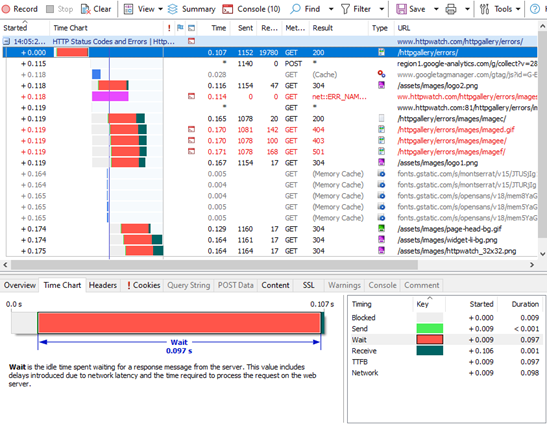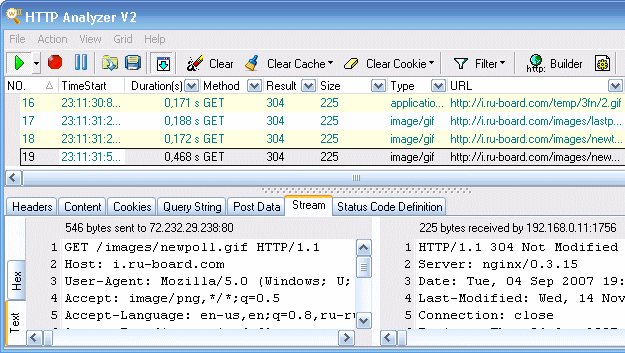

(and corresponding material covered in the textbook used for the class) that Receives a copy of every link-layer frame that is sent from or received by yourĬomputer. Your computer, and consists of two parts.
IE HTTP SNIFFER SOFTWARE
Within the dashed rectangle in Figure 1 is an addition to the usual software in The right of Figure 1 are the protocols (in this case, Internet protocols) andĪpplications (such as a web browser or ftp client) that normally run on your Sent/received from/by application and protocols executing on your machine.įigure 1 shows the structure of a packet sniffer. Similarly, received packets are never explicitly addressed to the packet It observes messages being sent and received by applicationsĪnd protocols running on your computer, but never sends packets itself. Of the various protocol fields in these captured messages. Suggests, a packet sniffer captures (“sniffs”) messages being sent/receivedįrom/by your computer it will also typically store and/or display the contents The basic tool for observing the messages exchangedīetween executing protocol entities is called a packet sniffer. You’ll observe, and you’ll learn, by doing. You’ll observe the network protocols in your computer “inĪction,” interacting and exchanging messages with protocol entities executingĪnd your computer will be an integral part of “live” labs in this class. Network applications in different scenarios using a computer on your desk, at In the Wireshark labs, we’ll take the latter


The Java applets that accompany the textbook This can be done in simulated scenarios or in a “real” networkĮnvironment such as the Internet. Protocols to perform certain actions and then observing these actions and theirĬonsequences. Protocols” – observing the sequence of messages exchanged between two protocolĮntities, delving down into the details of protocol operation, and causing Greatly deepened by “seeing protocols in action” and by “playing around with One’s understanding of network protocols can often be Studied extensively in Chapter 5 of the textbook, and in the class labs. Name’s origin comes from the Ethernet protocol, a link-level protocol that is Incidentally, some people pronounce the nameĮthereal as “ether-real,” while others pronounce it “e-thir-E-al,” as in theĮnglish word ethereal, which means ghostly or insubstantial. Wireshark Packet Sniffer and Packet CaptureĪs noted on the corresponding SourceForge site, theĮthereal development team switched names from Ethereal to Wireshark in May 2006įor more details on this).Slides and handouts posted on the course Web site.Thurday March 4, 2009, at the beginning of class. Instructor: Jean-Claude Franchitti Session:


 0 kommentar(er)
0 kommentar(er)
